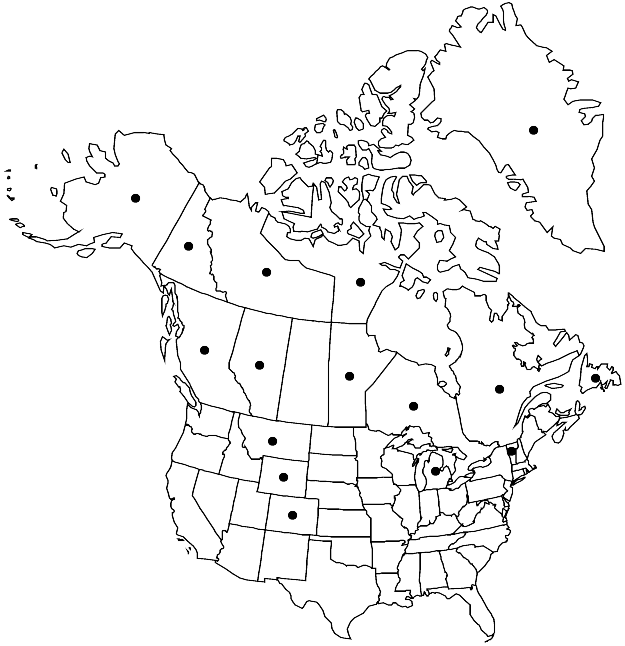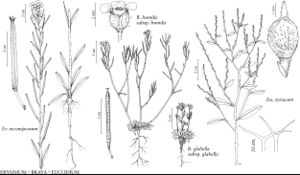Braya humilis subsp. humilis
Stems ascending to erect, branched or unbranched, 0.4–3.3 dm, sparsely to moderately pubescent. Leaves: blade margins sinuate-dentate, shallowly pinnatifid, or entire, surfaces moderately pubescent. Flowers: petals white, pink, or purple, 2.5–6.9 (–7.5) × (0.7–) 0.9–4 (–4.2) mm. Fruits usually fertile and fully developed, somewhat torulose, 0.6–1.2 (–1.3) mm wide; septum not fenestrate or split longitudinally. 2n = 28, 42, 56, 70.
Phenology: Flowering May–Jul.
Habitat: Sandy, gravelly soil along streams, lakeshores, roadsides, moraines, open stony slopes, dolomite cliffs and slopes, limestone ledges, solifluction soils
Elevation: 0-4000 m
Distribution

Greenland, Alta., B.C., Man., Nfld. and Labr. (Nfld.), N.W.T., Nunavut, Ont., Que., Yukon, Alaska, Colo., Mich., Mont., Vt., Wyo., e, c Asia
Discussion
Subspecies humilis is extremely variable morphologically. In a general way, morphological form correlates with ploidy level, e.g., tetraploids, octoploids, and decaploids tend to be short in stature with small leaves. Hexaploids are less predictable. They range from short plants with small leaves to large, robust, multi-branched plants with large, pinnatifid leaves. Attempting to segregate most morphological forms of Braya humilis into logical infraspecific taxa is an exercise in futility. Populations that appear distinctive in the field almost always blur imperceptibly into the larger subsp. humilis continuum when compared with other populations from across the range of distribution. Subspecies humilis is broadly distributed on calcareous substrates in arctic, subarctic, alpine, and boreal regions of North America and Asia.
Selected References
None.
Lower Taxa
"not" is not a number. "elongated" is not a number."thick" is not a number."dm" is not declared as a valid unit of measurement for this property."dm" is not declared as a valid unit of measurement for this property.
